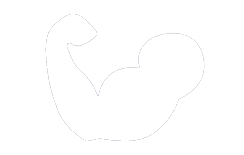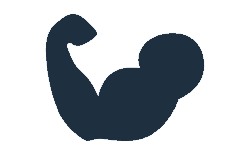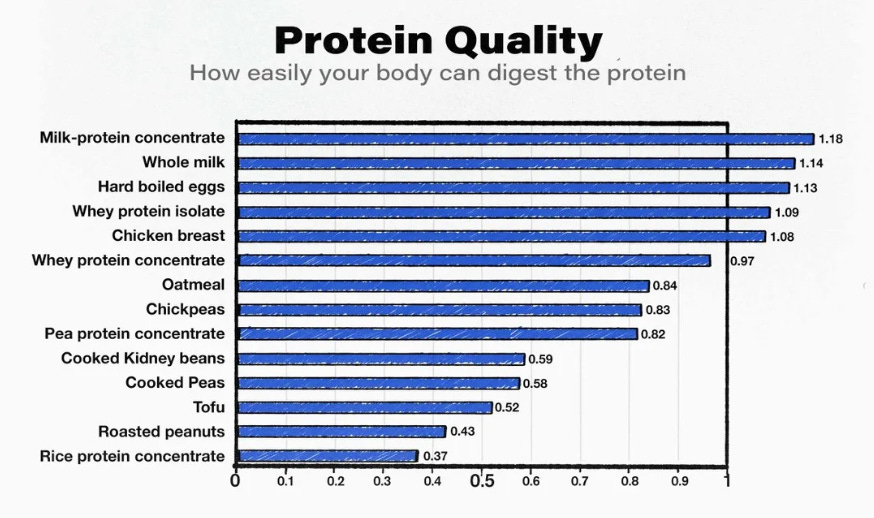· weightlifting · 14 min read
Top 7 Face Pull Alternatives In 2024
Looking to level up your workout routine? Face pulls are a great exercise to target your rear delts and upper back.
Looking to level up your workout routine? Face pulls are a great exercise to target your rear delts and upper back. In this article, we will explore the importance of face pulls, the muscles they target, and common mistakes to avoid.
We will provide you with seven alternative exercises to incorporate into your workout routine. So, whether you’re a beginner or a seasoned gym-goer, get ready to take your fitness game to the next level with these effective exercises.
What Are Face Pulls?
Face pulls are a versatile exercise commonly used to target the muscles in the shoulders, upper back, and traps, providing a comprehensive workout for the upper body. These exercises can be performed using resistance bands or a cable machine, making them accessible for different fitness levels and training settings.
Face pulls are particularly beneficial for improving posture and shoulder stability by strengthening the rear delts, rhomboids, and rotator cuff muscles. When done correctly, they also engage the core for added stability. Variations of face pulls include adjusting the height of the anchor point for the bands or changing the grip width on the cable machine. These variations help target specific areas of the upper body and provide a well-rounded workout.
Why Are Face Pulls Important?
Face pulls play a crucial role in enhancing shoulder health, improving posture, and strengthening the muscles in the upper back, particularly the rear delts and traps. Incorporating face pulls into your workout routine offers a range of benefits for overall fitness and muscle development.
By targeting the often neglected rear deltoids and upper back muscles, face pulls help correct imbalances that can result from overemphasis on chest and anterior shoulder workouts. This exercise also aids in improving shoulder stability, which is essential for injury prevention and maintaining proper alignment during various physical activities. The engagement of multiple muscle groups during face pulls contributes to better overall posture, reducing the risk of muscle strain and promoting a more aesthetically pleasing appearance.
What Muscles Do Face Pulls Target?
Face pulls primarily target the muscles in the shoulders, upper back, and rear deltoids, providing a comprehensive workout that enhances strength and stability in the upper body. Engaging these muscle groups through proper form and technique is essential for maximizing the benefits of face pulls.
By performing face pulls correctly, you activate the rear deltoids, which are crucial for shoulder health and overall upper body development. The upper back muscles like the trapezius and rhomboids play a significant role in stabilizing the shoulder blades during this exercise. Ensuring proper alignment and contraction of these muscles not only aids in strength gains but also helps in preventing injuries.
This targeted activation leads to improved posture and overall upper body functionality, making face pulls a valuable addition to any strength training routine.
What Are Some Common Face Pull Mistakes?
When performing face pulls, it is important to avoid common mistakes that can hinder your progress and increase the risk of injury. Understanding the proper technique, form, and variations can help you replace ineffective movements with more beneficial ones.
- One common mistake to watch out for is using excessive weight, which can lead to improper form and reduce the effectiveness of the exercise.
- It’s crucial to focus on engaging the rear deltoids and upper back muscles throughout the movement to maximize the benefits. Keeping the shoulders down and back, and pulling the rope towards the face while maintaining a neutral spine position are key tips to ensure proper execution.
- Incorporating variations such as high or low pulley attachments can help target specific muscle groups like the traps, rhomboids, and rear delts for a more well-rounded workout.
Using Too Much Weight
One common mistake during face pulls is using excessive weight, which can lead to improper form, strain on the shoulders, and increased risk of injury. It is crucial to prioritize correct form, focus on muscle activation, and adjust the resistance based on your training goals.
Injury prevention should always be at the forefront of your strength training routine, as neglecting proper form and overloading the muscles can result in long-term damage. By maintaining the correct posture, engaging the targeted muscles, and gradually increasing the weight as your muscles strengthen, you can reduce the chances of strains and injuries.
Remember, the goal of any exercise is to build strength and endurance while keeping your body safe and healthy.
Not Keeping Proper Form
Maintaining proper form throughout face pull exercises is essential for targeting the intended muscle groups, activating the muscles effectively, and maximizing the benefits of the workout. Correcting form inconsistencies and focusing on muscle engagement can significantly enhance the effectiveness of the exercise.
When performing face pulls, form plays a crucial role in isolating the rear deltoids, rhomboids, and upper traps, leading to improved muscle activation. Ensuring your elbows are elevated above your wrists and squeezing your shoulder blades together at the peak of the movement not only aids in muscle engagement but also helps prevent unnecessary strain on other muscle groups. By mastering different variations like using ropes, bands, or cables, you can further refine your technique and target specific muscles with precision.
Not Using a Full Range of Motion
Another common mistake during face pulls is not utilizing a full range of motion, which can limit muscles activation, reduce the benefits of the exercise, and impact overall form. Ensuring proper execution with a complete range of motion is key to maximizing muscle engagement and reaping the full rewards of face pulls.
By incorporating a full range of motion, you activate a wider array of muscles in the upper back, shoulders, and arms, enhancing strength and stability. Proper activation of these muscles not only improves performance but also helps prevent injuries and muscle imbalances. The increased targeting of specific muscle groups through proper form enables you to isolate and develop those areas more effectively, leading to better overall muscle definition and strength. Without full extension and contraction in each rep, you miss out on the chance to fully challenge and develop these muscle groups.
What Are Some Alternative Exercises to Face Pulls?
In addition to face pulls, there are several alternative exercises that target similar muscle groups in the back and shoulders, providing a diverse range of options for your workout routine.
These exercises can be performed using resistance bands, a cable machine, or bodyweight, offering versatility and variety in training. Resistance bands are excellent tools to add resistance to exercises like rows, reverse flyes, or lat pulldowns, engaging the muscles effectively. Cable machines, on the other hand, provide a smooth and constant resistance throughout the range of motion, enhancing muscle activation and strength gains in the back and shoulders. By incorporating these alternatives into your routine, you can challenge your muscles from different angles and intensities, promoting overall muscle growth and development.
Band Pull-Aparts
Band pull-aparts are an excellent alternative to face pulls, targeting the muscles in the shoulders, upper back, and traps effectively. This exercise variation helps improve strength in the upper body and enhances muscle stability and coordination.
One of the key advantages of band pull-aparts is their versatility and ease of execution, making them suitable for individuals of all fitness levels. By engaging the muscles in the posterior chain, including the rhomboids and rear deltoids, band pull-aparts contribute to better posture and shoulder health. To add intensity, variations such as using different resistance bands or altering grip width can be implemented to target specific muscle groups and further enhance overall upper body strength.
Rear Delt Flyes
Rear delt flyes are a valuable exercise alternative to face pulls, focusing on strengthening the rear deltoids, shoulders, and upper back muscles. Incorporating rear delt flyes into your workout routine can enhance shoulder stability and improve muscle engagement in the upper body.
By targeting the rear deltoids specifically, rear delt flyes help in improving posture and reducing the risk of shoulder injuries. This exercise also engages the stabilizing muscles in the upper back, promoting overall strength and balance in the upper body. Strengthening the muscles in these areas not only enhances functional movement patterns but also contributes to a more aesthetically balanced physique. Including rear delt flyes in a well-rounded workout regimen can lead to improved shoulder health, better posture, and increased muscle definition in the upper body.
Seated Cable Rows
Seated cable rows offer a different approach to targeting the back, shoulders, and upper body muscles compared to face pulls. This exercise variation focuses on developing strength, improving technique, and enhancing muscle activation in the targeted areas.
By incorporating seated cable rows into your workout routine, you can effectively engage the lats, traps, rhomboids, and biceps. This exercise not only helps in building a strong, well-defined back but also aids in improving posture and overall upper body stability.
One of the key advantages of seated cable rows is the ability to adjust the resistance levels easily, allowing for progressive overload and continuous muscle growth. To maximize the benefits, it is essential to maintain proper form throughout the movement, ensuring that the back remains straight, shoulders are pulled back, and elbows are kept close to the body.
Reverse Flyes
Reverse flyes serve as an effective alternative to face pulls, engaging the muscles in the shoulders, upper back, and traps. This exercise variation promotes muscle development, enhances fitness levels, and targets specific muscle groups for a comprehensive upper body workout.
By incorporating reverse flyes into your workout routine, you not only strengthen your posterior muscles but also improve posture and upper body stability. The key benefits of reverse flyes include enhancing shoulder mobility, reducing the risk of shoulder injuries, and sculpting a well-defined back.
Variations such as seated reverse flyes or bent-over reverse flyes allow you to target different angles and intensities, providing versatility in your training regimen. To execute reverse flyes correctly, maintain a slight bend in the elbows, engage the core for stability, and focus on squeezing the shoulder blades together for maximum engagement.
Bent-Over Dumbbell Rows
Bent-over dumbbell rows offer a challenging alternative to face pulls, engaging the muscles in the back, shoulders, and upper body. This exercise variation promotes strength development, muscle endurance, and muscle coordination for a well-rounded workout.
Including bent-over dumbbell rows in your routine not only targets key muscle groups like the latissimus dorsi, rhomboids, and posterior deltoids but also aids in improving core stability.
By executing this exercise correctly, you can enhance your posture and overall strength, which can have a positive impact on your performance in various athletic activities.
Incorporating different grip options and tempo variations can further challenge your muscles and stimulate growth for continued progress in your fitness journey.
Building muscle coordination and endurance through exercises like these can also help prevent injuries and enhance overall physical function.
Upright Rows
Upright rows provide an alternative exercise option to target the muscles in the shoulders, back, and upper body, particularly the traps. Incorporating upright rows into your training program can enhance muscle strength, improve posture, and develop the targeted muscle groups effectively.
This exercise is a notable choice for those seeking to strengthen their shoulders and trap muscles. By engaging in upright rows, individuals can effectively work on their deltoids, which play a crucial role in shoulder stability and strength.
The movement involved in upright rows also aids in improving posture by targeting the upper back muscles, leading to better alignment and reduced likelihood of developing postural imbalances. The engagement of the traps during this exercise helps in enhancing overall shoulder and upper body strength, contributing to a well-rounded strength training routine.
Face Pulls with Resistance Bands
Performing face pulls with resistance bands offers a convenient and effective way to engage the muscles in the shoulders, upper back, and traps.
This variation allows for enhanced muscle activation due to the constant tension provided by the resistance bands throughout the entire range of motion. By targeting these muscle groups, individuals can improve their shoulder stability, posture, and overall upper body strength.
A key advantage of using resistance bands is the ability to adjust the resistance level easily, making it suitable for all fitness levels. To maximize the effectiveness of face pulls with resistance bands, maintain proper posture with a straight back, engage the core muscles, and focus on squeezing the shoulder blades together at the peak of the movement.
How Do You Incorporate These Alternatives into Your Workout?
Incorporating alternative exercises to face pulls into your workout routine can provide a well-rounded approach to training the muscles in the back, shoulders, and upper body.
By incorporating exercises like band pull-aparts, rear delt flyes, and seated cable rows, you can add variety to your routine and target different areas of the back and shoulders. It’s crucial to pay attention to form and technique when performing each exercise to ensure you are effectively engaging the intended muscles.
To optimize muscle targeting, consider adjusting the grip, stance, or range of motion for each exercise to activate specific muscle fibers. Experimenting with different combinations of exercises and modifications can help you achieve a more comprehensive and balanced workout routine.”
Choose 2-3 Alternatives for Each Workout
When incorporating alternative exercises to face pulls, aim to select 2-3 variations for each workout session to target a diverse range of muscle groups in the back, shoulders, and upper body.
By incorporating a mix of exercises like bent-over rows, lat pulldowns, and reverse flys in your routine, you stimulate different muscle fibers and challenge your body in unique ways. These variations not only help in muscle growth but also improve overall strength and stability. Targeting various muscle groups ensures balanced development and reduces the risk of overuse injuries. Strength training with diverse exercises is essential for enhancing overall fitness levels and achieving long-term health benefits.
Vary Your Reps and Sets
To optimize your workout routine with alternative exercises, consider varying your reps and sets for each movement to challenge different muscle groups and promote muscle growth and strength. Adapting your training intensity and volume can help prevent plateaus and enhance overall performance.
By adjusting the number of reps and sets in your workouts, you can stimulate muscle fibers in new ways, leading to increased muscle development and improved strength. For instance, lower reps with heavier weights can focus on building muscle density and strength, while higher reps with lighter weights can target muscular endurance.
This variation not only keeps your workouts interesting but also ensures that your muscles are continually challenged, preventing them from adapting and hitting a plateau. To maximize the effectiveness of your training, it’s recommended to alternate between different rep ranges and set combinations to keep your muscles guessing and progressing.
Focus on Proper Form and Technique
Maintaining proper form and technique while performing alternative exercises is essential for targeting specific muscle groups effectively and reducing the risk of injury.
By paying close attention to your body alignment and controlled movements during each repetition, you can maximize muscle engagement and minimize strain on vulnerable areas. It’s crucial to avoid rushing through exercises and instead focus on a slow and deliberate pace to ensure proper muscle activation. Incorporating proper breathing techniques can further aid in enhancing overall performance and preventing injury. Remember, quality over quantity is key when it comes to alternative exercises, so prioritize form and technique above all else.
Frequently Asked Questions
What are some alternatives to face pulls?
Some alternative exercises to face pulls include reverse flyes, band pull-aparts, cable diagonal pulls, and barbell rows.
Why should I do face pull alternatives?
Face pull alternatives can provide variety to your workout routine and target different muscles in the upper back and shoulders.
Can I do face pull alternatives if I don’t have access to a cable machine?
Yes, there are many face pull alternatives that can be done without a cable machine, such as using resistance bands or dumbbells.
Are face pull alternatives suitable for beginners?
As with any exercise, it is important for beginners to start with lighter weights and proper form to avoid injury. Consult a trainer or do research before attempting face pull alternatives.
Do face pull alternatives only work the upper back and shoulders?
While face pull alternatives primarily target the upper back and shoulders, they can also engage muscles in the arms and core, providing a full-body workout.
How often should I do face pull alternatives?
It is recommended to incorporate face pull alternatives into your workout routine 2-3 times a week, with at least a day of rest in between to allow for muscle recovery.






